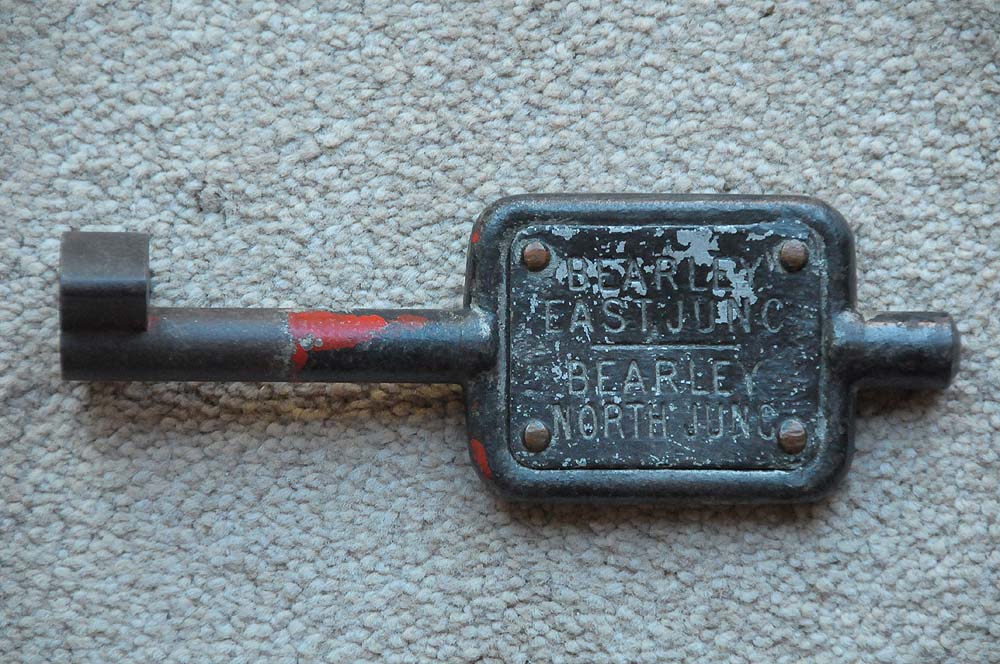 |
|
GWR Route: Hatton to Bearley and Alcester Branch
Bearley Station: gwrbj2348
 |
View of the one of the sides of the Bearley East Junction to
Bearley North Junction single line key token. The token system was developed in
Britain in the 19th century, to facilitate safe working of single-line
railways. If a branch line is a dead end with a simple shuttle train service,
then a single token is sufficient. The driver of any train entering the branch
line (or occupying any part of it) must be in possession of the token, and no
collision with another train is possible. For convenience in passing it from
hand to hand, the token was often in the form of a tablet, key or staff, the
latter typically 800 mm long and 40 mm diameter. Such a staff is usually
literally a wooden staff with a brass plate stating the two signal boxes
between which it is valid. Using only a single token does not provide
convenient operation when consecutive trains are to be worked in the same
direction. The simple token system was therefore extended: if one train was to
be followed by another in the same direction, the driver of the first train was
required to be shown the token, but not take possession of it (in theory he was
supposed to physically touch the token, but this was not strictly followed). He
was given a written authority to enter the single line section, referred to as
the ticket. He could then proceed, and a second train could follow. In the
earliest days the second train could proceed after a designated time interval,
as on double lines at the time. However, following the Armagh rail disaster of
1889, block working became mandatory. Seeing the train staff provided assurance
that there could be no head-on collision. To ensure that the ticket is not
issued incorrectly, a book of numbered tickets is kept in a locked box, the key
to which is permanently fastened to the token, or is the token. In addition,
the lock prevents the token being removed until the ticket box is closed, and
it cannot be closed unless the book of tickets is in the box. Once a ticket is
issued, its number is recorded in a Train Register book, and the token is
locked in a secure place. This system is known as staff and ticket.
 back back

|
